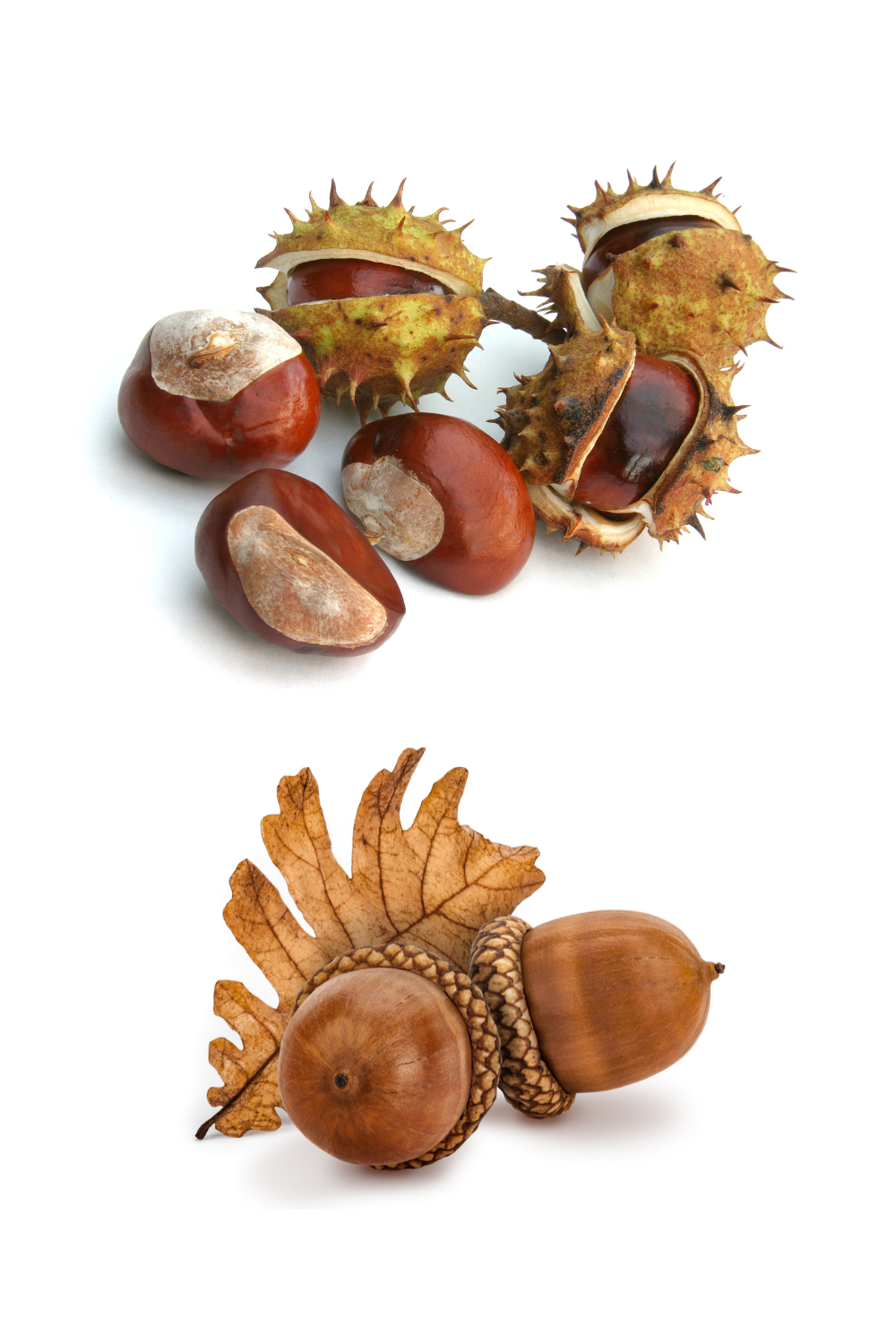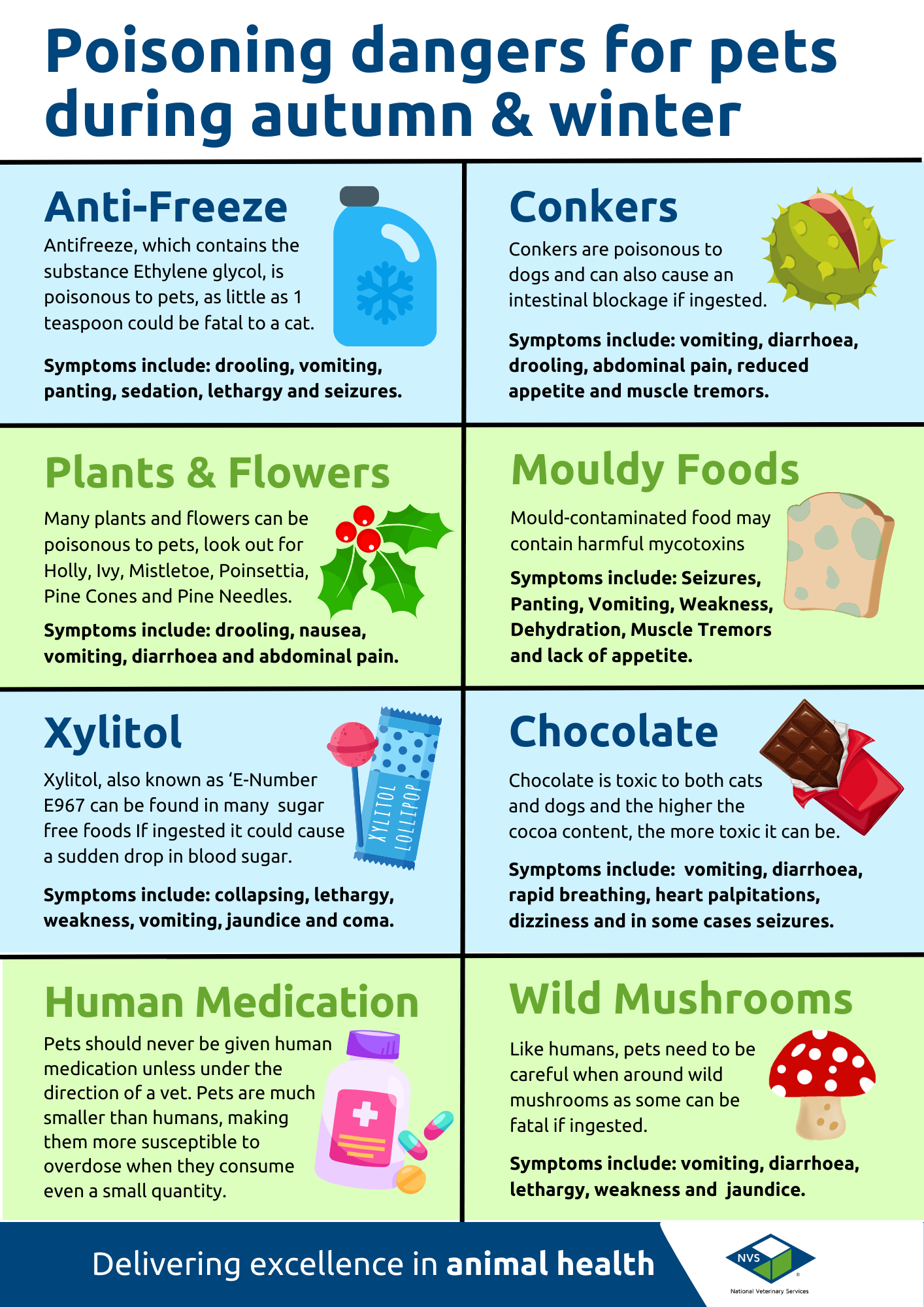Poisoning Risks
Autumn & winter are key seasons for pet poison awareness and a challenging time for your pet owners to ensure that they’ve pet-proofed their homes and avoid any potential risks.
Welcome to NVSWeb! To order NVS products, please sign into NVS Online. Not a customer yet? Register today
Autumn & winter are key seasons for pet poison awareness and a challenging time for your pet owners to ensure that they’ve pet-proofed their homes and avoid any potential risks.
During their daily walks or even in the safety of their owner’s homes or back gardens, pets may come across various potential hazards. These hazards range from seemingly innocuous conkers, acorns and plant, to human cold & flu medications or antifreeze.
Plus, let’s not forget there are many other year-round risks, including those posed by chocolate, dried fruit, and food products containing the sweetener xylitol, all of which become more prevalent as we approach the festive season.

Click an item in the list below to find out how they could affect pets and what the typical poisoning symptoms are to look out for.
Antifreeze, which contains the substance Ethylene glycol, is poisonous to humans and pets. As little as 1 teaspoon could be fatal to a cat, whilst 1 tablespoon is enough to cause kidney failure in a dog.
Symptoms of poisoning include – drooling, vomiting, panting, sedation, lethargy, seizures, off-balance and in some cases even death.
Conkers contain a chemical called aesculin which is poisonous to dogs, with poisoning symptoms showing at any time between one and six hours after swallowing. Ingested conkers can also cause an intestinal blockage, especially in smaller breeds of dog.
Symptoms of poisoning include – vomiting, diarrhoea, drooling, abdominal pain, reduced appetite, restlessness and muscle tremors.
Many plants and flowers can be poisonous to pets. In the autumn and winter, it’s particularly worth looking out for seasonal plants and flowers, such as Holly, Ivy, Mistletoe, Poinsettia, Pine Cones and Pine Needles.
Symptoms can vary depending on the plant but typically include – drooling, nausea, vomiting, diarrhoea and abdominal pain.
Consuming mould-contaminated food can pose a grave risk to pets’ health, as it may contain harmful mycotoxins
Symptoms of mould poisoning could include – seizures, panting, vomiting, weakness, dehydration, muscle tremors and lack of appetite.
Xylitol, also known as ‘E-Number E967’ can be found in many foods such as sugar-free confectionary, ice cream, chewing gum and baked goods. If ingested it could cause a sudden, life-threatening drop in blood sugar. A large dose can also cause severe damage to the liver and even liver failure.
Symptoms include – collapsing, lethargy, weakness, vomiting, jaundice, comas and in some cases death.
Chocolate is toxic to both cats and dogs and the higher the cocoa content, the more toxic it can be. Chocolate contains substances called methylxanthines (theobromine and caffeine) which the human body can process, but a pet’s body can’t deal with them in the same way.
Symptoms can include – vomiting, diarrhoea, rapid breathing, heart palpitations, dizziness and in some cases seizures.
It’s essential to recognize that a pet should never be given human medication unless under the direction of a vet. Pets are significantly smaller than humans, making them more susceptible to overdose when they consume even a small quantity of medication. Moreover, dogs, in particular, have a tendency to chew on entire packets of medication, resulting in the absorption of potentially life-threatening doses. Additionally, many human medications can be poisonous to pets. For example, paracetamol can prove deadly for cats.
Like humans, pets need to be careful when around wild mushrooms as some can be fatal if ingested. Teaching a dog to avoid all mushrooms with a ‘leave it’ command tends to be the best tactic.
Symptoms can vary depending on what is ingested, but the most common symptoms of mushroom poisoning are – vomiting, diarrhoea, lethargy, weakness, jaundice
